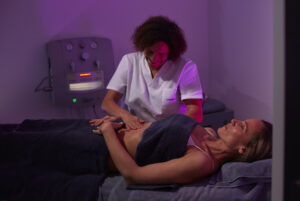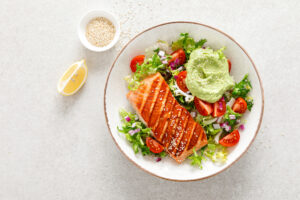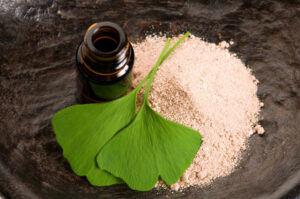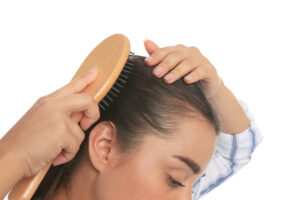Healthista Editor Olivia Hartland-Robbins visits Longevity Health and Wellness Hotel based in the Algarve, Portugal to experience 3 days of medi-spa detox and healing treatments
For many, spa treatments are a must when trying to achieve ultimate relaxation on holiday. But Longevity Health and Wellness have taken relaxation and wellbeing one step further.
Portugal, renowned for its stunning coastline, rich history, and vibrant culture, is also home to a sanctuary of rejuvenation and renewal: the Longevity Health & Wellness Hotel, nestled amidst the tranquil landscapes of the Algarve region.
Longevity is a world class, five-star medical spa spanning two floors
The exterior, shaped to resemble a wave is the first glimpse at how the hotel promotes a functional and modern approach to wellness. With state of the art facilities including an infra-red sauna and an Iyashi Dome (a chamber that helps you burn up to 600 calories in just 30 minutes), Longevity is a world class, five-star medical spa spanning two floors with a talented team of medical and wellness experts.
Beckoning travellers seeking a holistic approach to health and well-being, the resort also promotes luxurious accommodations as well as personalised treatments and nourishing cuisine – every aspect of the Longevity experience is designed to promote longevity and vitality.
Whether embarking on a solo wellness journey or sharing the experience with loved ones, a stay at Longevity promises to leave guests feeling renewed, inspired, and ready to embrace a healthier, more vibrant life.
READ MORE: The Mayr Method Diet – Healthista tries Rebel Wilson approved detox at Park Igls Medical Spa
The Accommodation
Whether seeking solitude or sharing the experience with loved ones, the accommodations at Longevity Health & Wellness Hotel offer a retreat from the stresses of everyday life.
Upon arrival, guests are greeted with the promise of relaxation and comfort in the resort’s 70 exquisite rooms and suites. Each accommodation is simple yet comfortable, decorated in tones of white, grey and blue and designed to provide a serene sanctuary, blending modern amenities with touches of Portuguese charm.
From spacious deluxe rooms overlooking lush gardens to lavish suites with private terraces and sea views, every option caters to the discerning tastes of wellness enthusiasts.
READ MORE: The anti-ageing treatment now helping muscle recovery, brain health and a flagging sex life
Tailored Treatments
At the heart of the Longevity experience lies its comprehensive range of personalised treatments, crafted to address individual health goals or concerns. Guests can choose to embark on one of the countless life-enriching programmes on offer – each a journey of rejuvenation guided by a team of expert therapists and wellness professionals.
guests can choose from an array of options, including massage therapies, acupuncture, yoga, and meditation sessions
From traditional spa therapies to cutting-edge techniques, the resort’s menu of treatments encompasses a holistic approach to well-being. Whether seeking relaxation, detoxification, guests can choose from an array of options, including massage therapies, acupuncture, yoga, and meditation sessions.
For those seeking a deeper transformation, bespoke wellness programs are available, combining nutritional counselling, fitness coaching, and mindfulness practices to foster lasting lifestyle changes in an attempt to increase longevity.
READ MORE: Terranam – a Spanish wellness retreat that nurtures all 5 senses
Nourishing Cuisine
Healthy living begins with nourishing the body from within, and Longevity elevates culinary experiences to support optimal well-being. The hotel’s dining venues offer a tantalising array of gourmet dishes crafted from locally sourced, organic ingredients.
Guests can indulge in a diverse range of flavours, from Mediterranean-inspired cuisine to international delicacies, all prepared with a focus on nutrition and flavour. Not only is the food on offer tasty but it’s also rich in bioactive compounds and anti-inflammatory components.
Longevity offers the choice of two restaurants: the casual and relaxed Pure Café with a panoramic view of Alvor Bay, as well as the Mediterranico Restaurant, designed for private dining.
it’s also rich in bioactive compounds and anti-inflammatory components
For those with specific dietary preferences or requirements, the resort’s culinary team is adept at accommodating individual needs, ensuring that every dining experience is both satisfying and nourishing.
READ MORE: St Michaels Resort – the ultimate staycation for spa lovers & adventure seekers
Serene Spa Facilities
No wellness retreat would be complete without a sanctuary dedicated to relaxation and rejuvenation, and Longevity excels in this regard with its state-of-the-art spa facilities.
The spa offers an oasis of tranquility where guests can unwind and rejuvenate their mind, body, and spirit. From thermal circuits featuring saunas, steam rooms, and hydrotherapy pools to innovative wellness experiences such as cryotherapy and pressotherapy.
Longevity excels in this regard with its state-of-the-art spa facilities
Expert therapists are on hand to guide guests through personalised spa rituals including clay and seaweed wraps, designed to promote relaxation, detoxification, and revitalisation. Whether seeking a moment of solitude or sharing the experience with a loved one, the spa facilities at Longevity provide a haven of serenity amidst the busy and bustling world.
READ MORE: Where to travel in 2024 according to your star sign
Energising Extras
Aside from the personalised treatments and state of the art facilities, Longevity also hosts daily activities centred around fitness and mindfulness.
With a timetable updated daily, and seasonal adjustments taken into consideration, Longevity offer activities from circuit training, Pilates and Yoga, to Astrology workshops and essential oil workshops, plus many more.
As Europe’s newest medical wellness destination, the five-star Longevity Health & Wellness Retreat is the first of its kind to embrace modern integrative and regenerative medicine with the most advanced wellness and preventative diagnostics, therapies, and programmes. With a philosophy that is keenly reflected throughout the entire property around preventative, personalised, holistic, integrative, and regenerative medicine, Longevity boasts state-of-the-art medical and wellness facilities, a distinguished team of leading industry experts, and a comprehensive menu of revolutionary programmes.
As a holistic health break designed to cleanse the gastro-intestinal, visceral, and lymphatic systems, Longevity’s Essential Detox Programme starts from £2,171 per person for five nights.
Book here: www.longevityalvor.com/en/


























